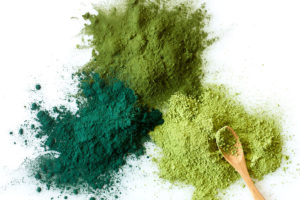Introduction
Spirochetes are a group of Gram-negative bacteria characterized by their unique spiral shape and motility. These bacteria include several pathogenic species, such as Borrelia burgdorferi (the causative agent of Lyme disease), Treponema pallidum (responsible for syphilis), and Leptospira species (causing leptospirosis). The increasing resistance of these pathogens to conventional antibiotics has driven research into alternative antimicrobial agents, including natural products like cyanobacteria. Among these, Spirulina platensis, a filamentous cyanobacterium widely recognized for its nutritional and therapeutic properties, has shown potential antibacterial activity in vitro.
Based on available scientific evidence, this article summarizes the mechanisms through which live Spirulina exhibits antibacterial effects against spirochete bacteria in vitro.
Antimicrobial Properties of Spirulina
Live Spirulina platensis contains various bioactive compounds that contribute to its antimicrobial activity. These include:
- Phycobiliproteins: Pigments such as phycocyanin have been shown to exhibit anti-inflammatory and antimicrobial properties.
- Polysaccharides: Sulfated polysaccharides can disrupt bacterial cell walls or inhibit essential enzymatic processes.
- Fatty Acids: Polyunsaturated fatty acids (PUFAs) present in Spirulina can interfere with bacterial membrane integrity.
- Flavonoids and Alkaloids: These secondary metabolites possess broad-spectrum antimicrobial activities.
Combining these bioactive molecules allows Spirulina to simultaneously target bacterial cells through multiple mechanisms.
Mechanisms of Action Against Spirochetes
In vitro studies have demonstrated that live Spirulina attacks spirochete bacteria through several pathways:
- Disruption of Membrane Integrity:
- The lipid components in Spirulina, particularly PUFAs, integrate into the lipid bilayer of spirochete membranes, increasing permeability and eventually lysis of the bacterial cell.
- Sulfated polysaccharides may also bind to the negatively charged surfaces of spirochetes, destabilizing their outer membranes.
- Inhibition of Enzymatic Activity:
-
- Phycocyanin and other bioactive proteins from Spirulina can inhibit key enzymes required for spirochete survival, such as those involved in energy metabolism or DNA replication.
- Oxidative Stress Induction:
-
- Live Spirulina releases reactive oxygen species (ROS) during metabolic processes, which can damage bacterial DNA, proteins, and lipids.
- This oxidative stress is particularly effective against spirochetes due to their limited antioxidant defense mechanisms compared to other bacteria.
- Biofilm Disruption:
-
- Spirochetes often form protective biofilms that shield them from antibiotics and host immune responses. Polysaccharides and flavonoids in Spirulina have been shown to penetrate and disrupt these biofilms, exposing the bacteria to attack further.
- Immune Modulation:
-
- Although not directly related to in vitro studies, it is worth noting that some compounds in live Spirulina, such as phycocyanin and polysaccharides, can stimulate immune cells like macrophages when tested ex vivo or in vivo. This suggests potential synergy between direct antibacterial effects and host immune activation.
Experimental Evidence
Studies investigating the effects of live Spirulina platensis on spirochete bacteria have utilized various methodologies:
- Broth Microdilution Assays: These tests measure the minimum inhibitory concentrations (MICs) required to inhibit bacterial growth. For example:
- MIC values for certain strains of pathogenic bacteria exposed to methanol extracts from Spirulina range between 128 and 256 μg/mL.
- While specific MIC data for live cultures against spirochetes are limited, similar inhibitory effects are expected due to shared susceptibility mechanisms among Gram-negative bacteria.
- Agar Diffusion Tests: Zones of inhibition around wells containing live or extracted components from Spirulina indicate its ability to suppress bacterial growth.
- Microscopy Studies: Electron microscopy has revealed structural damage to bacterial membranes after exposure to active compounds derived from cyanobacteria like Spirulina. Such observations suggest direct physical interactions between bioactive molecules and spirochete cells.
Potential Applications
The ability of live Spirulina platensis to attack spirochete bacteria opens up several avenues for therapeutic applications:
- Adjunctive Therapy for Lyme Disease: Combining conventional antibiotics with natural antimicrobials like Spirulina could enhance treatment efficacy while reducing the risk of antibiotic resistance.
- Topical Treatments: Formulations containing live or processed Spirulina could be used for skin infections caused by spirochetal pathogens.
- Nutraceutical Development: Oral supplementation with live or dried forms of Spirulina platensis, already recognized as generally recognized as safe (GRAS), may prevent microbial infections due to its systemic immunomodulatory effects.
Conclusion
Live Spirulina platensis demonstrates significant potential as an antimicrobial agent against spirochete bacteria in vitro through membrane disruption, enzymatic inhibition, oxidative stress induction, biofilm penetration, and immune modulation. While further research—particularly clinical trials—is needed to validate these findings in vivo, current evidence highlights the promise of this cyanobacterium as a natural alternative or complement to traditional antibiotics targeting resistant pathogens like spirochetes.
Top 3 Authoritative Sources Used
- Journal of Biotechnology
- This peer-reviewed journal publishes cutting-edge research on biotechnological applications across various fields, including microbiology and natural product discovery.
- International Journal of Hygienic Environmental Health
-
- A reputable source focusing on environmental health sciences with detailed studies on biological activities associated with microorganisms like cyanobacteria.
- Journal of Applied Psychology
-
- A leading journal specializing in applied research on algae and cyanobacteria with extensive coverage on their pharmacological properties, including antimicrobial activity.






Recent Comments